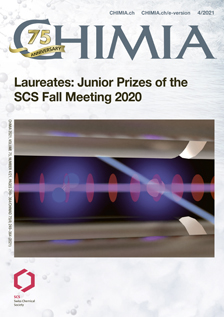Listening with Curiosity – Tracking the Acoustic Response of Portable Laser Ablation
DOI:
https://doi.org/10.2533/chimia.2021.300PMID:
33902799Keywords:
Acoustic tracking, Laser induced plasma, Portable laser ablation sampling, Sampling in the fieldAbstract
Nowadays, one of the methods of choice for minimal invasive sampling of solid matter is laser ablation (LA). Routine LA sampling is performed commonly in the laboratory and the amount of ablated mass can directly be monitored and analysed. By contrast laser-based sampling in the field, using a portable laser ablation system (pLA), still remains challenging concerning low-absorbing or NIR-transparent samples. The current hardware is limited in regards to photon energy and density resulting in unsteady ablation. But as the actual amount of collected mass is the major crux of on-site sampling, with this performance it is often unknown and estimates can only be made based on the experience from prior method development and the experience of the user. In the following work an easy-to-use method to monitor the amount of ablated material collected during laser-based sampling by measuring the acoustic response is presented. The pLA-system was coupled to inductively coupled plasma mass spectrometry (ICPMS) via a diffusion driven gas exchange device (GED) which allowed to monitor mass removal and acoustic response quasi-simultaneously. For the current instrumentation only actual mass removal leads to the formation of shockwaves (SW) and, thus, acoustic signals. These events can be used as indicator for executed LA events and counted on an individual basis. The intensity of acoustic signals has been shown to correlate with the LA mass, i.e., the amount of ablated material. This allows to perform re-adjustment of the laser focus during sampling for optimal ablation based on the intensity of the acoustic signal. Likewise, acoustic intensity together with counting allows the operator to make estimates about total mass sampled. Therefore, unsuccessful laser aerosol collection in the field shall become a thing of the past.Downloads
Published
2021-04-28
Issue
Section
Scientific Articles
License
Copyright (c) 2021 Stefan Kradolfer, Kurt Heutschi, Joachim Koch, Detlef Günther

This work is licensed under a Creative Commons Attribution 4.0 International License.
How to Cite
[1]
S. Kradolfer, K. Heutschi, J. Koch, D. Günther, Chimia 2021, 75, 300, DOI: 10.2533/chimia.2021.300.







